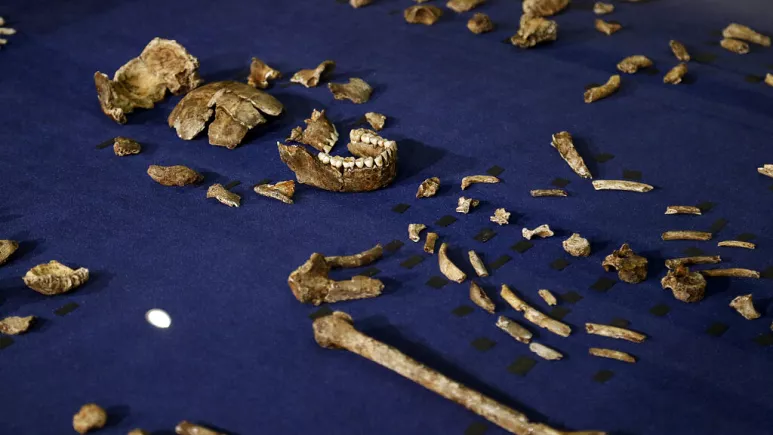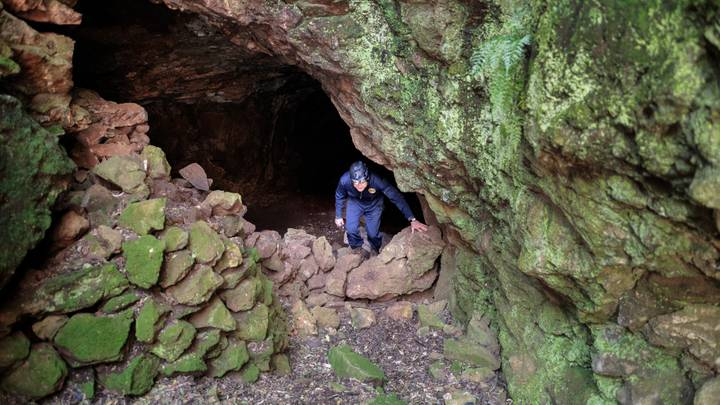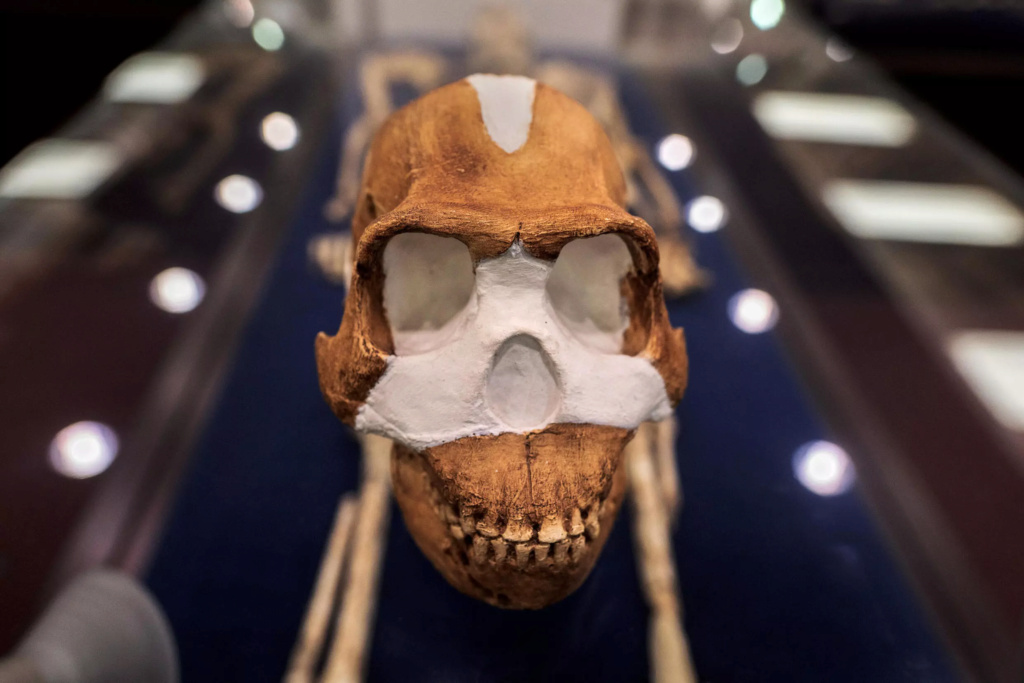Researchers announce their discovery in South Africa of the oldest prehistoric tombs

A composite skeleton of a Homo naledi man surrounded by hundreds of other fossil items on display in Magaliesburg, South Africa
In a development that may shake the scientific legacies of human evolution, world-famous paleontologist Lee Berger announced the discovery by researchers in South Africa of the oldest prehistoric burials, which increases the age of the first traces of funerary practices by at least 100,000 years.
The fossils of these human ancestors were found inside burials during archaeological excavations that began in 2018, in a state of squatting inside buried cavities at the end of a network of narrow galleries.
The explorers noted that the tombs were clogged with earth that had initially been drawn in to form the holes, indicating that the bodies of these humans were buried voluntarily.

"cradle of humanity"
"These are the oldest recorded human burials, predating the burial of Homo sapiens by at least 100,000 years," the researchers emphasized in a series of articles that still need to be peer-reviewed before being published in the scientific journal "eLife".
The excavations took place at an archaeological site known as the "Cradle of Humanity", which is included in the UNESCO heritage list and is located northwest of Johannesburg.
The oldest previously discovered tombs, mainly in the Middle East and Kenya, date back to about 100,000 years before our era, and contain remains of Homo sapiens.
South African burials date back between 200,000 and 300,000 years. It contains the bones of a human being of the type "Homo naledi" (star in the local language), a short human being about 1.5 meters long with a brain the size of an orange.
This species, whose discovery in 2013 by the American paleoanthropologist Lee Berger called into question the linear readings of human evolution, remains a mystery to scientists.

By combining features of creatures millions of years old, such as primitive teeth and legs capable of climbing, Homo naledi also has two feet similar to those of modern humans, and hands capable of using tools.
small brain
Scientists say, "These results show that funerary practices were not limited to Homo sapiens or other large-brained humans."
This theory, which runs counter to the generally accepted notion that awareness of death and related practices are characteristic of humans, was previously hinted at by Lee Berger when he introduced Homo naledi to the world in 2015.
The hypothesis aroused anger at the time, amid questions from many specialists about the scientific accuracy approved by the authority that published these results, which are supported by the "National Geographic" network.
"It was beyond the tolerance of scientists at the time," Berger told AFP in an interview. And he explains that they are still "convinced that all this is related to our big brain and that it happened very recently, less than a hundred thousand years ago."
"We are about to tell the world that this is not true," adds the 57-year-old researcher.

Geometric symbols, carefully traced using a pointed cutting tool, have been found on the walls of the tombs. According to Berger, squares, triangles and crosses were deliberately left on smooth surfaces, perhaps to make them more readable.
"This means that humans are not the only ones who have evolved symbolic practices, but they may not have invented such behaviors," Lee Berger adds.
And expresses the anthropologist at the University of Missouri Carol Ward, believes that "these results, if confirmed, will be of great potential importance."
"I look forward to learning how the disposal of the remains prompts the exclusion of possible explanations other than intentional burial, and to see the results once they are peer-reviewed," she told AFP.
Further analyzes are still needed. But Berger's team has already declared that it will have to "rethink the whole series of hypotheses about humans and human evolution."
For a long time, researchers have associated the ability to control fire, engrave, or paint with mental strength in modern humans, as in the case of Cro-Magnons.
"Burial, perception, and even art can have a much more complex non-human origin than we thought," said Princeton anthropologist Agustín Fuentes, a co-author of the study.
Source : websites

